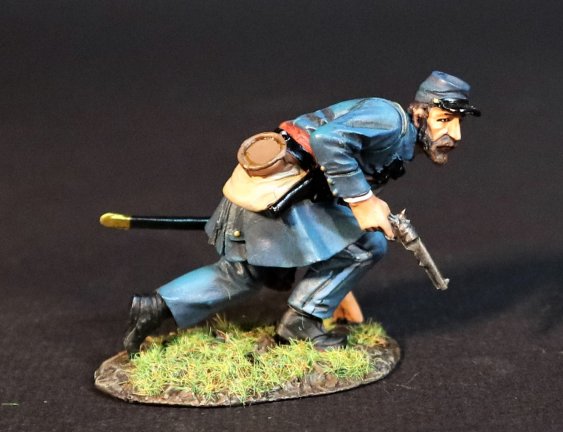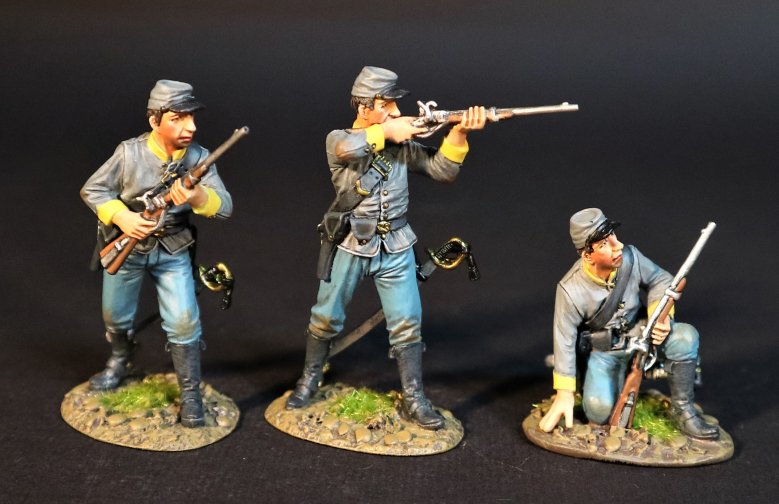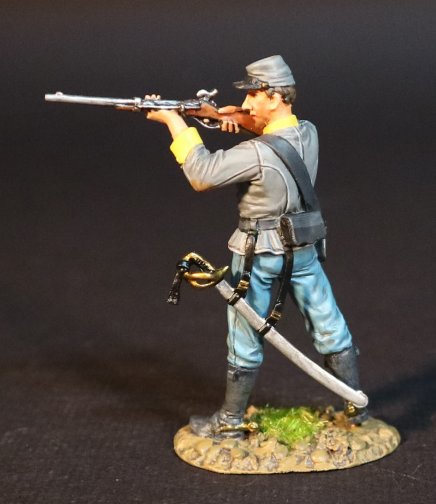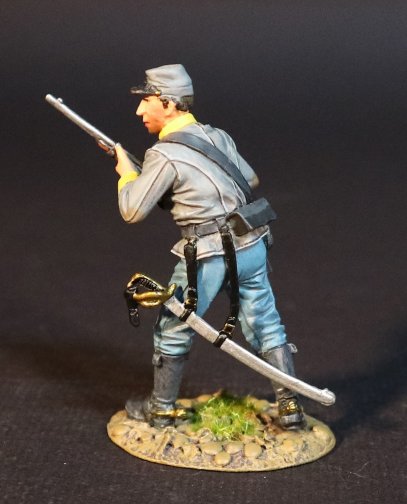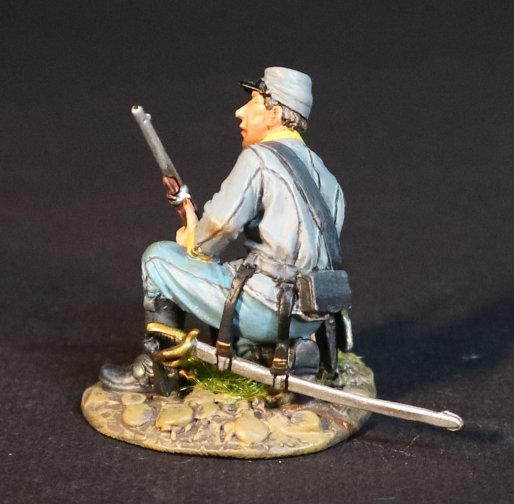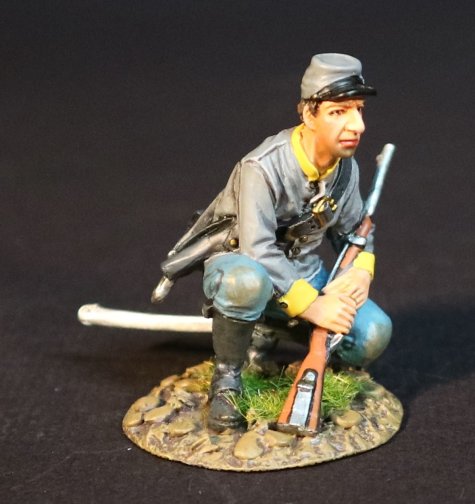- Joined
- Feb 2, 2011
- Messages
- 2,093
NEW RELEASES FOR OCTOBER 2023
AMERICAN CIVIL WAR
ARTILLERY
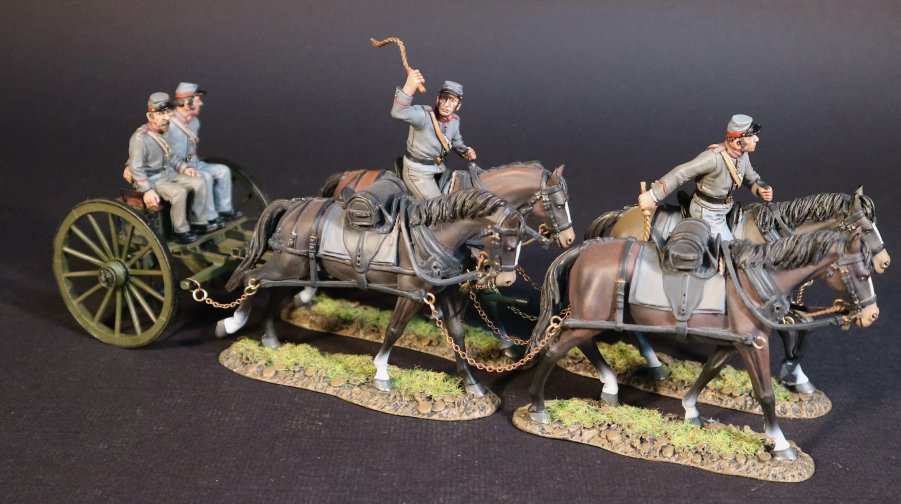
CSART-14
THE AMERICAN CIVIL WAR 1861 - 1865
CONFEDERATE ARTILLERY.
ARTILLERY CREW ARRIVING.
(10 pcs)
PLEASE NOTE THIS SET COMES IN TWO BOXES
THE FIRST BATTLE OF MANASSAS, 1861.
THE ARMY OF THE SHENANDOAH,
1[SUP]st[/SUP] ROCKBRIDGE ARTILLERY
The Seventy men of the 1[SUP]st[/SUP] Rockbridge Artillery were organized in April 1861 by Virginia Military Institute professor John McCausland. William N. Pendleton took command of the battery in late April after McCausland was transferred to command another unit.
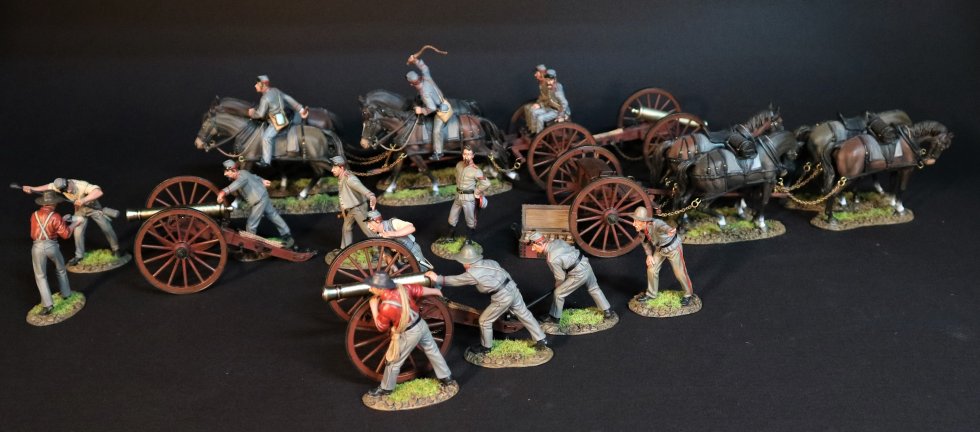
The battery was initially equipped with two 6 pounders from VMI and two guns from Richmond.
Pendleton named the first four guns “Mathew”, “Mark”, “Luke” and “John”, after the Apostles.
The M1841 6-pounder field gun was a bronze smoothbore muzzle-loading cannon that was adopted by the United States Army in 1841 and used from the Mexican-American War to the American Civil War.
It fired a 6.1lb round shot up to a distance of 1,523yds at 5 degree elevation. It could also fire canister shot and spherical case shot.
The cannon was used during the early years of the American Civil War, but it was soon outclassed by newer field guns such as the 12 pounder Napoleon.
In the Union Army, the 6-pounders were replaced as soon as more modern weapons became available and none were manufactured after 1862. However the Confederate States Army continued to use the cannon for a longer period because the lesser industrial capacity of the South could not produce newer guns as fast as the North.
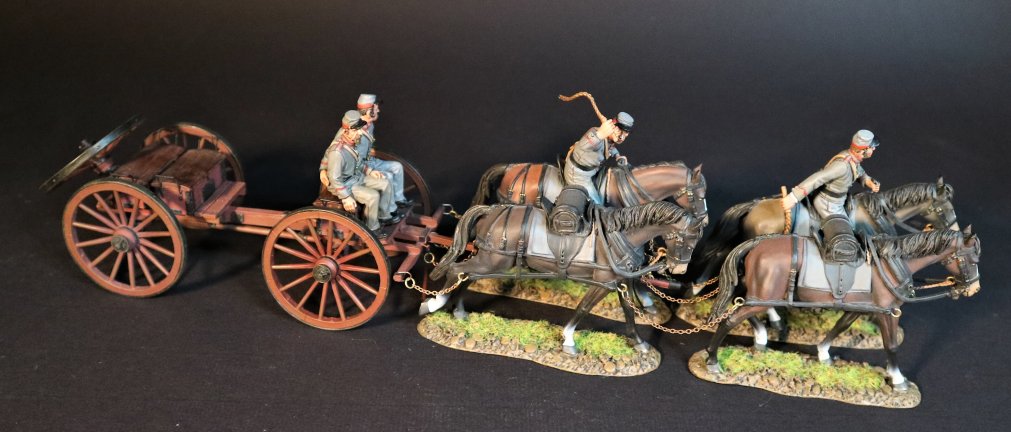
On 18[SUP]th[/SUP] July the battery moved east with the Stonewall Brigade to link up with Confederate general P.G.T. Beauregard’s troops at Manassas Junction. On 21[SUP]st[/SUP] July during the First Battle of Manassas, Pendleton’s Battery was among the Confederate batteries defending the key position of the battle, Henry House Hill. The Battery was visited by Confederate president Jefferson Davis, who had gone to Manassas to watch the battle, during the Union retreat. In the aftermath of the battle, the battery received captured Union cannon.
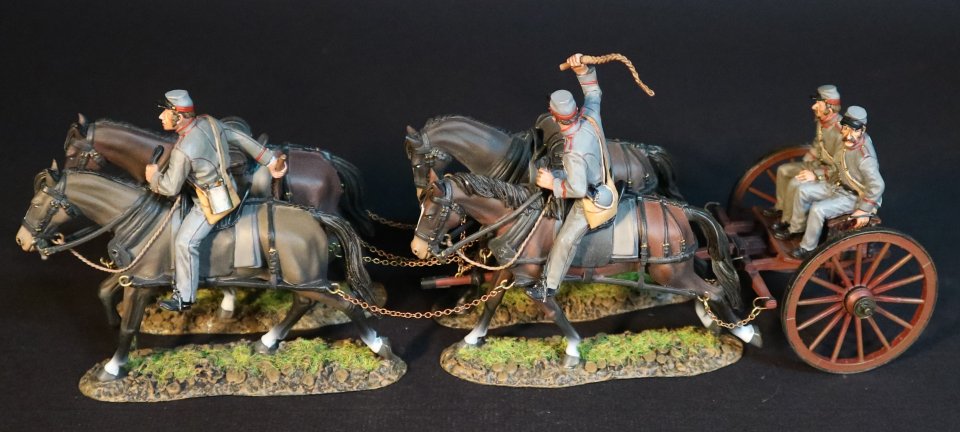
ROCKART-09
THE AMERICAN CIVIL WAR 1861 - 1865
THE FIRST BATTLE OF MANASSAS, 1861.
THE ARMY OF THE SHENANDOAH,
1[SUP]st[/SUP] ROCKBRIDGE ARTILLERY
“JOHN” ARTILLERY CREW ARRIVING.
(10 pcs)
PLEASE NOTE THIS SET COMES IN TWO BOXES
AMERICAN CIVIL WAR
ARTILLERY

CSART-14
THE AMERICAN CIVIL WAR 1861 - 1865
CONFEDERATE ARTILLERY.
ARTILLERY CREW ARRIVING.
(10 pcs)
PLEASE NOTE THIS SET COMES IN TWO BOXES
THE FIRST BATTLE OF MANASSAS, 1861.
THE ARMY OF THE SHENANDOAH,
1[SUP]st[/SUP] ROCKBRIDGE ARTILLERY
The Seventy men of the 1[SUP]st[/SUP] Rockbridge Artillery were organized in April 1861 by Virginia Military Institute professor John McCausland. William N. Pendleton took command of the battery in late April after McCausland was transferred to command another unit.

The battery was initially equipped with two 6 pounders from VMI and two guns from Richmond.
Pendleton named the first four guns “Mathew”, “Mark”, “Luke” and “John”, after the Apostles.
The M1841 6-pounder field gun was a bronze smoothbore muzzle-loading cannon that was adopted by the United States Army in 1841 and used from the Mexican-American War to the American Civil War.
It fired a 6.1lb round shot up to a distance of 1,523yds at 5 degree elevation. It could also fire canister shot and spherical case shot.
The cannon was used during the early years of the American Civil War, but it was soon outclassed by newer field guns such as the 12 pounder Napoleon.
In the Union Army, the 6-pounders were replaced as soon as more modern weapons became available and none were manufactured after 1862. However the Confederate States Army continued to use the cannon for a longer period because the lesser industrial capacity of the South could not produce newer guns as fast as the North.

On 18[SUP]th[/SUP] July the battery moved east with the Stonewall Brigade to link up with Confederate general P.G.T. Beauregard’s troops at Manassas Junction. On 21[SUP]st[/SUP] July during the First Battle of Manassas, Pendleton’s Battery was among the Confederate batteries defending the key position of the battle, Henry House Hill. The Battery was visited by Confederate president Jefferson Davis, who had gone to Manassas to watch the battle, during the Union retreat. In the aftermath of the battle, the battery received captured Union cannon.

ROCKART-09
THE AMERICAN CIVIL WAR 1861 - 1865
THE FIRST BATTLE OF MANASSAS, 1861.
THE ARMY OF THE SHENANDOAH,
1[SUP]st[/SUP] ROCKBRIDGE ARTILLERY
“JOHN” ARTILLERY CREW ARRIVING.
(10 pcs)
PLEASE NOTE THIS SET COMES IN TWO BOXES



